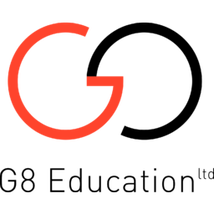
For one thing, the auto parts market in Australia and New Zealand remains a highly fragmented industry with BAP being a leader in consolidating across the space. Its size not only gives it economies of scale but significant buying power and the ability to allocate inventory in a manner hard to replicate by smaller scale competitors. Moreover, the take up of electrical vehicles remains in its infancy across BAP’s major markets (i.e. new car sales with no internal combustion engine currently make up less than 1% of the market) and effectively represents a rounding error within existing Australian fleets (which is what is relevant at least in the short term). This aspect gives the business enough lead time to transition towards EVs and spare parts within that market in addition to its ICE footprint. One disclaimer here is that EVs typically have fewer moving spare parts; we expect volumes to be an issue over the longer run though certain niches and non-specific categories to be consistent (e.g. windscreen wipers or lighting).

Author: Sid Ruttala
Moreover, the segment in which Bapcor operates is in our view quite defensive given that, unlike new car sales, the market for spare parts tends to be more resilient and less driven by consumer discretionary income on the downside. While on the upside stagnant wage growth perversely produces a tailwind given the likelihood of consumers sticking to their existing vehicles and buying second hand in preference for new purchases. On the upside, Covid created a catalyst for the business in two ways, one transitory and the other likely to stay into the medium term. The first is the continued government stimulus measures which saw consumers opt towards upgrading existing cars and the second being the more longer term likelihood of domestic travel in preference for international as the world continues to battle with the Delta variant (i.e. elevated domestic travel). Indeed, this is reflected by the average age of on-road vehicles. There are currently more than 14m vehicles in circulation with an average age of greater than 5 years.
With that context let’s get to the numbers! Revenue was up 20% to $1.763bn, EBITDA up 20.8% to $280m and NPAT up 46.5% to $130m AUD. Arriving at the juicy and all important part, the metric that we feel most relevant given the capital intensive nature of the business, the requirement for inventory. ROIC came in at 11.6% (up 2.31%). Leverage also continues to be managed conservatively, standing at 0.7x debt to earnings (flat).
Red Flags & Risks: Continued lockdown measures and related unemployment numbers provide substantial risks by decreasing the distance driven. The risk of online sales for non-essential parts could also act as a long-term headwind for the business though management has been investing into its omnichannel strategy. At a PE of 22x the business is also pricey.
Dividend Yield: 2.6%
This is, however, a dividend growth story and we expect them to grow in the high single digits.
G8 Education (GEM.ASX)
 This is a business that continues to be deeply unloved by the market, never quite recovering from the Covid-related sell-off as uncertainty continues to persist within the broader childcare segment. Before delving further, a brief summary of the business. G8 Education is a childcare provider that currently operates around 500 facilities across the nation. Its model was primarily acquisition driven thus far, buying smaller privately owned operators within the space at a multiple of 4x earnings and issuing debt/equity at lower multiples than acquisition. A smart strategy for the time and allowed it to grow EPS in the high single/low double digits through its initial growth phase. On the flip side, this has also meant that management operated it along the lines of a listed private equity type model, stripping out costs in preference for high payouts and service quality.
This is a business that continues to be deeply unloved by the market, never quite recovering from the Covid-related sell-off as uncertainty continues to persist within the broader childcare segment. Before delving further, a brief summary of the business. G8 Education is a childcare provider that currently operates around 500 facilities across the nation. Its model was primarily acquisition driven thus far, buying smaller privately owned operators within the space at a multiple of 4x earnings and issuing debt/equity at lower multiples than acquisition. A smart strategy for the time and allowed it to grow EPS in the high single/low double digits through its initial growth phase. On the flip side, this has also meant that management operated it along the lines of a listed private equity type model, stripping out costs in preference for high payouts and service quality.As can be imagined, Covid and the related lockdowns turned out to be significant headwinds for the business. The firm cancelled dividends through last year. With that in mind, it may be surprising that we would consider GEM, but here is the flipside. G8 operates in an industry that should see significant tailwinds from a policy and demographic perspective with a growing population of 0-5 year olds and government support for the sector. Currently, around 60% of childcare costs are subsidized at the federal level which continues to increase thanks in no small part to Australia’s short election cycles. And, with an aging demographic, we feel that this is one area where there is broad policy and economic consensus as childcare will be increasingly crucial in boosting productivity and participation rates amongst the half of the population taking on primary care responsibilities.
Given the above tailwind, we believe that the business has hit critical scale to focus more on organic growth as opposed to its historic strategy (many of you may be familiar with ABC Childcare and that particular debacle in the GFC). Here is where we feel that management can add the most value, especially within the context of competition from the not-for-profit sector and the highly fragmented nature of the industry. There is scope for improvement in improving quality of delivery and balanced cost outs especially through the implementation of smart-rosters, reduction of direct consumables (which make up about 10% of the cost base) as well as better negotiation of lease agreements. We will continue to watch those metrics. From a dividend perspective, given the fiscal incentives provided by the government during lockdowns we feel that it was a good move to suspend on an interim basis but expect reinstatement through 2022.
Now, let’s get to the numbers (which will be in comparison to 2019, as opposed to 2020).
Revenue was down 2% to $421m, EBITDA down 6.1% to $102m, NPAT up 83.1% to $25m AUD. Honestly, quite messy numbers but the metrics seem to be stabilising across the business given the significant 244m loss in 2019. Moreover, with management raising equity capital in 2020 and retiring all its existing Net Debt, we feel that the worst of the turbulence is now behind them. Liquidity remains strong with undrawn facilities amounting to $400m.
So, why does it make sense?
Quite simply, the current price. Despite the potential for oversupply in the market, we feel that the sell-off is overdone. Especially when considering a likely stabilisation in the business and, as the population continues to get vaccinated, we should hopefully see lockdowns ease heading into next year. We also see dividends coming back in CY22 and, assuming previous payout ratios, with the reduction in leverage it gives investors the potential to lock in an approximate 4% yield with the potential for longer-term growth given the tailwinds in the sector.
Red Flags & Risks: Given the centrality of subsidies to the sector, the business remains uniquely exposed to any changes in government policy. Continued lockdowns and oversupply also remain key threats in the short-to-medium run.
Dividend: 4.1% (expected) dividend yield, assuming continued recovery into next year.

